
The Sovereign Bastion is a former defensive structure of the Peter and Paul Fortress in St. Petersburg (Zayachy Ostrov), intended for conducting frontal and flanking fire.
Today, museums are located within the walls of the bastion, and the panoramic route "Nevsky Panorama"is equipped on the roof, where everyone can walk.
The original construction of the Sovereign bastion, as well as the entire Peter and Paul Fortress, took place from May 16, 1703, and then the fortress structures, including to save time, were built of wood and earth (wood-earth fortifications).
It was the Sovereign Bastion that laid the foundation for the construction of the original fortress and St. Petersburg.
The name" Gosudaryov", the bastion received in honor of Peter I, who supervised the construction of the bastion.
The construction of the bastion in stone took place in 1717-1732 according to the project of the architect and fortifier engineer D. Trezzini and military engineer B.-H. Minich. A stone ramp-ramp - for lifting guns and ammunition on the fortress wall was erected in 1752. The Nevsky facade of the bastion in 1782-1784, designed by engineer R. R. Tomilov, was faced with granite slabs. Inside the bastion were located two-tier combat casemates, which in the middle of the 19th century were rebuilt in single-tier. Under the bastion, a poterna was built - a tunnel for safe communication between the casemates. The bastion's casemates were used as workshops, warehouses, and barracks.
On May 27, 2003, a memorial sign to the "Tercentenary of St. Petersburg"was unveiled on the Sovereign Bastion.
Today, the Sovereign bastion is an integral part of the Peter and Paul Fortress and has a pentagonal shape with two front walls - facades and two side walls - flanks. The poterna and the casemate are open to visitors.
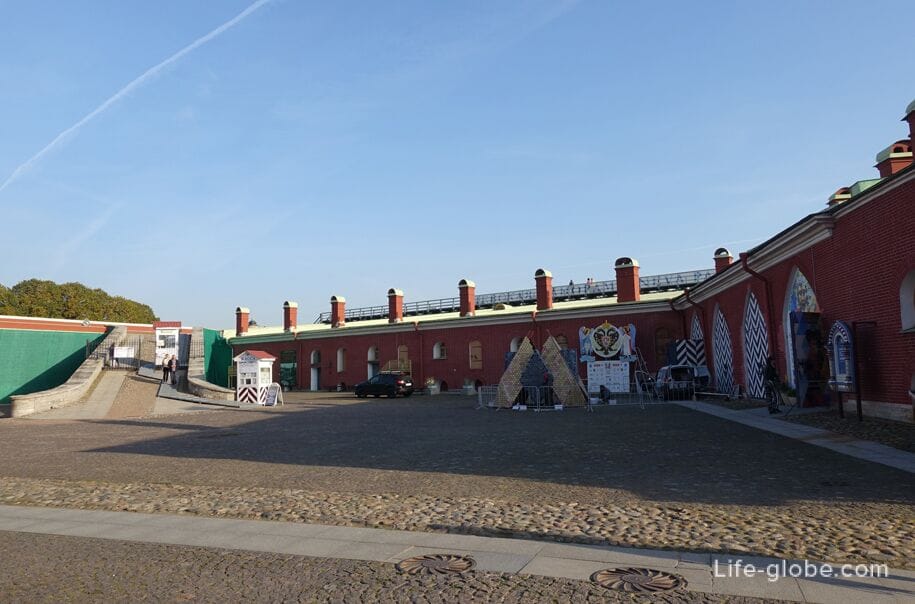
Photo of poterny Gosudaryov bastion
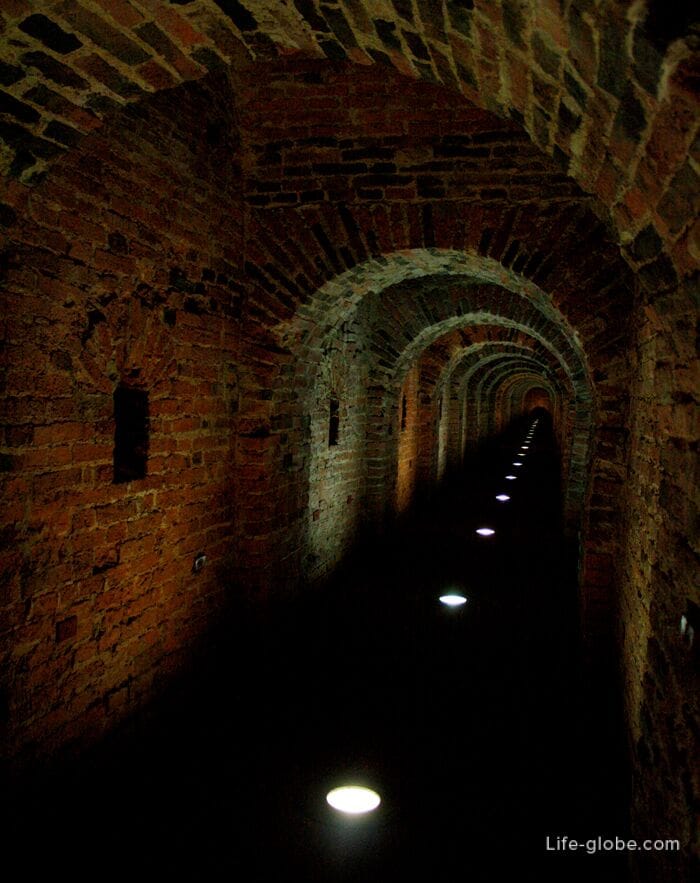
In 1726-1766, in one of the rooms of the Sovereign's Bastion, the legendary boat of Peter I, which is called the "Grandfather of the Russian Fleet", was stored. Then the boat was stored in the Bot House of the Peter and Paul Fortress, then it was transported to Peterhof, and in 1940 it entered the Central Naval Museum. Today, the place of the "Grandfather of the Russian Fleet" in the Botny House is occupied by its exact copy-a reconstruction model created in 1996-1997 to mark the 300th anniversary of the creation of the Russian Fleet. Learn more about the Bot House and the bot house…

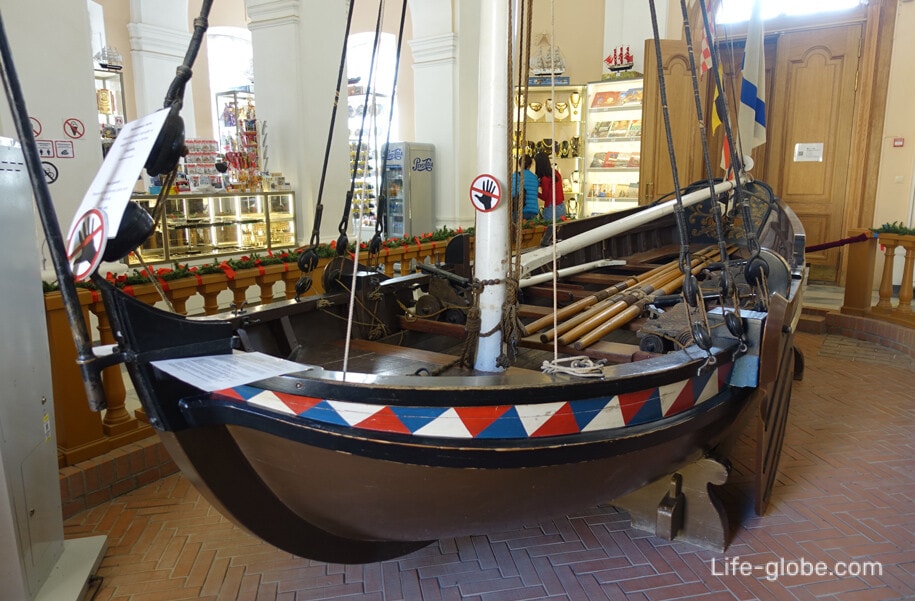
Within the walls of the Sovereign Bastion there is, among other things, the museum of architectural art ceramics, the exposition of which presents the history of the development of decorative ceramics in architecture and interior decoration of the 18th - early 20th centuries. Learn more about the Museum of Ceramics...


You can climb to the roof of the Gosudaryov Bastion, where the panoramic route "Nevsky Panorama" is laid on wooden bridges, which runs along the roof of the fortress wall from Gosudaryov to Naryshkin bastions.
The ascent to the roof can be carried out for a fee, from the inner wall of the bastion. There is also a cash register here. Learn more about the Nevsky Panorama...

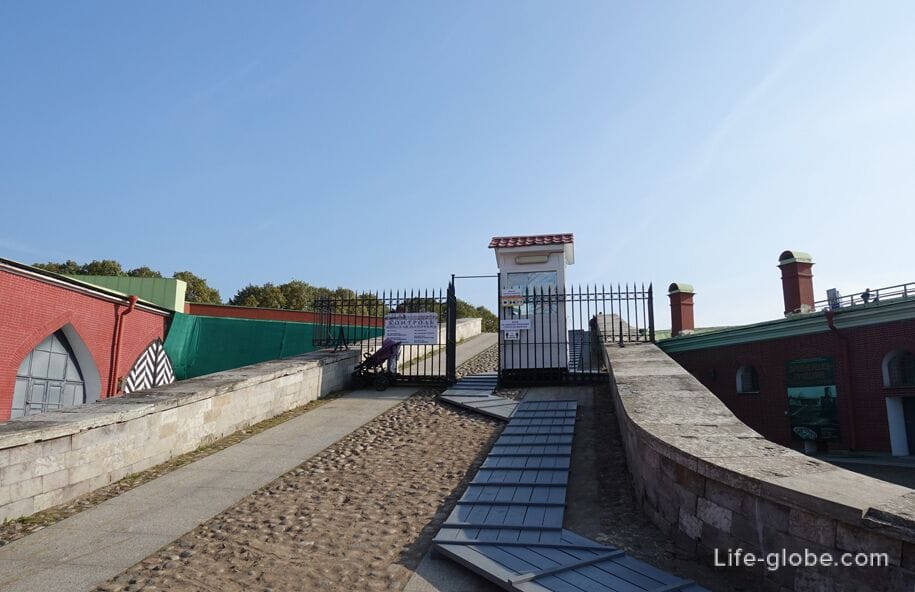
On the north side, the Sovereign Bastion is adjacent to Petrovskaya kurtina (part of the fortress wall) with Peter's Gate, which connects the Gosudaryov and Menshikov bastions, and from the south-west - Nevskaya kurtina with The Neva Gate, which connects the Gosudaryov and Naryshkin bastions.
View of Petrovskaya Kurtina
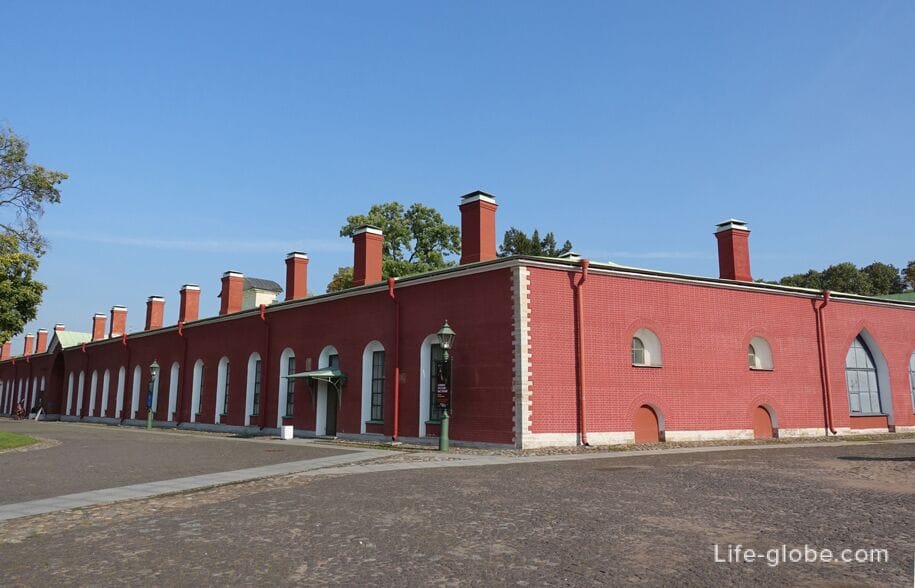
View of the Nevsky Kurtina
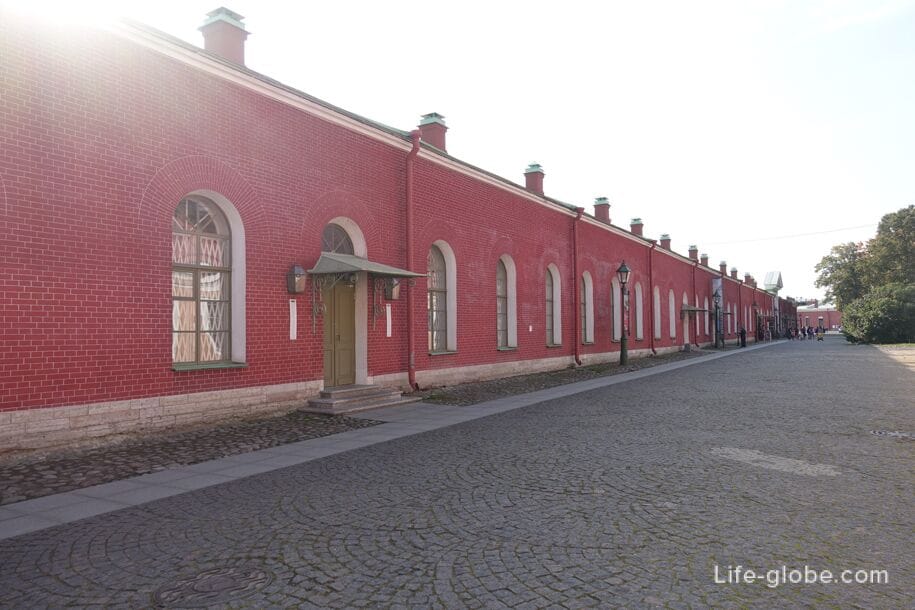
View of the Nevsky facade of the Sovereign Bastion and the Neva Curtain wall, faced with granite
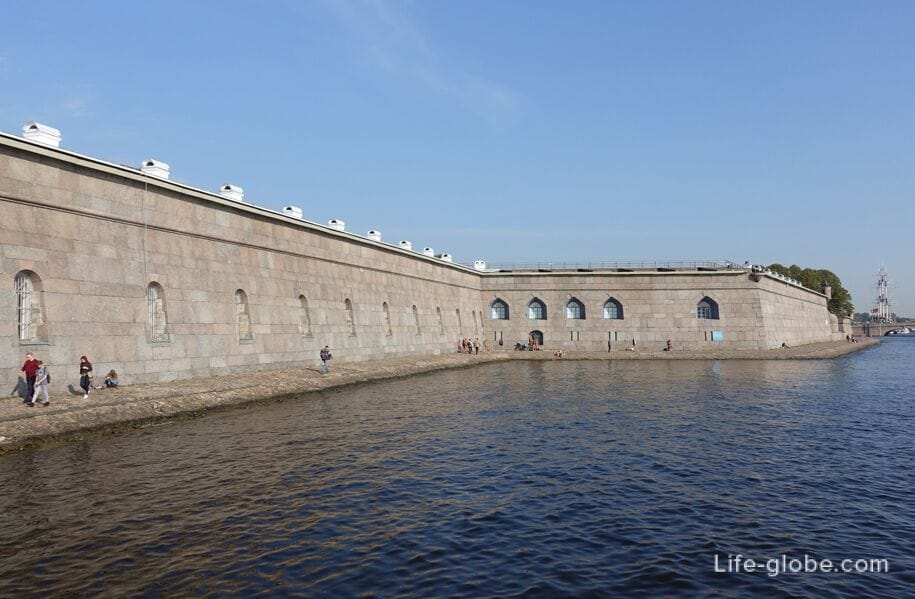
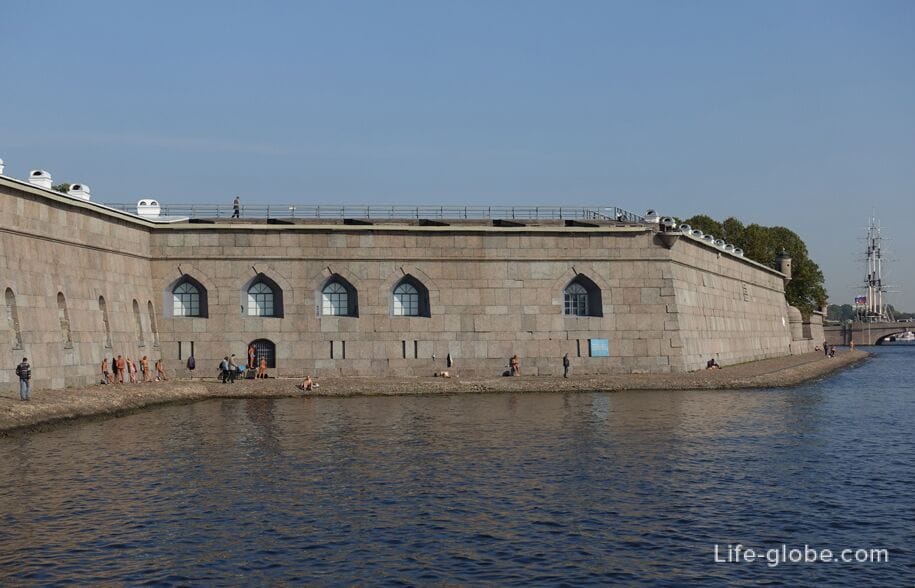
The sovereign Bastion is located in the south-eastern part of the Peter and Paul Fortress - near the waters of the Neva River.
The entrance to the territory of the Peter and Paul Fortress is free (free of charge).
You can also visit the Peter and Paul Fortress with one of the excursions
Nearest metro stations: "Gorkovskaya" and "Sportivnaya".
All accommodation facilities in Saint Petersburg, including in the city center and near the Peter and Paul Fortress, can be viewed and booked here